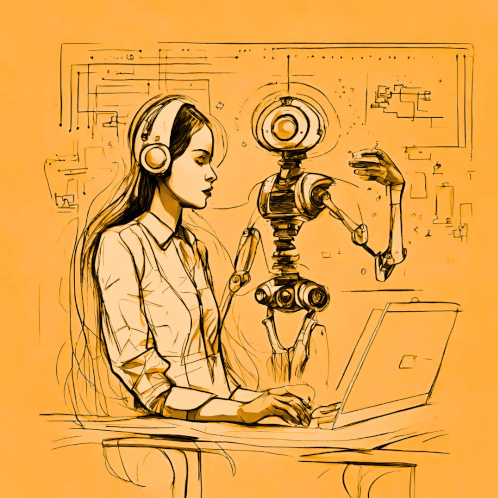Artificial intelligence can be used successfully in many areas of business, especially in translation. This begs the question: do we still need human translators? The answer is a resounding yes, because the complexity of a human being, the synergy of knowledge, experience, culture and emotion, is so far beyond the reach of a machine.
A growing number of companies are advertising on the internet that artificial intelligence has dramatically improved their operations in many areas of the business and has had a significant impact on their success. Artificial intelligence, or AI for short, can be used in almost any area where complex problems need to be solved or processes automated.
For example, AI is being used in medical diagnostics and in the development of drugs and therapies. In finance, the new technology is helping to assess the risk of investments, make forecasts and manage portfolios. It is being applied to optimise purchasing and marketing strategies, delivery processes, inventory management and security functions. In the entertainment industry, it recommends movies, TV shows and music, creates special effects and animation, and even analyses and optimises learning programmes. AI has also found its place in corporate human resources and job applications.
What exactly is AI?
Artificial intelligence is a specific type of computer programming. Algorithms are developed that teach the machine to recognise patterns and correlations in data, apply rules and decision trees, and learn from experience. Based on this data analysis, the computer can eventually generate different solution alternatives, make accurate predictions and decisions, and test their effectiveness.
A distinction is made between an AI that can perform a wide range of tasks completely autonomously, learning and making decisions on its own, and an AI that can only perform certain predefined tasks.
An AI that assists in the translation of text, video and images is based on powerful algorithms and advanced speech recognition technologies. It helps translate text and video into different languages in near real time, and is even designed to take into account cultural differences, idioms and linguistic idiosyncrasies. The AI is designed to contribute to authentic communication in different languages.
So why do we still need translators at all?
This begs the question: do we still need human translators? This question can only be answered by understanding what translators do. Because then it becomes clear that translators do not only use their brain, their neural network – an AI can do that too – but that the translator’s personality is also important. Their experience, their cultural and historical background and, above all, their empathy go into every translation and make it unique.
What exactly does translating involve?
Translators transform a source text in one language into a target text in another language. They use their knowledge of the vocabulary, grammar and culture of the country into which they are translating.
However, translators do not simply transfer the words of the source language into the target language according to the grammar of the target language. This is because there is often no exact equivalent in another language for a particular word, term or phrase. In such cases, the translator must analyse the specific word, term or phrase in detail.
What does this word etc. mean? What are its synonyms? Can I find another word or phrase with a similar meaning?
Once the translator has found a term in the source language that can be used to replace that word, the search for the corresponding term in the target language begins. This requires the translator to look at the whole sentence, sometimes even the whole paragraph.
What does this sentence or paragraph mean and how can it be translated into the target language? Or, to put it more precisely, does the replacement just found still mean the same as the original word when contextualised?
Sometimes the whole sentence or even the whole paragraph needs to be rearranged or rephrased to retain the meaning and content of the sentence or paragraph.
Text is intellectual property
It is not enough to translate a text word for word from the source language into the target language using the correct grammar. The most important thing in a good translation is to transfer the content, meaning, style and atmosphere of the source text into the target language in such a way that the target text has the same content, meaning, style and, above all, atmosphere as the source text.
A translator conveys a writer’s intellectual property from the writer’s language into the language of future readers. An author has a right to his or her intellectual property and not to have it altered. The translator must therefore translate a text in such a way that the stylistic, linguistic, contextual and emotional characteristics of the author’s text are preserved and recognisable in the target language. He or she works on behalf of the author in the target language.
AI lacks empathy
To be able to do this work, the translator must have a special understanding of the language. They must be familiar with the idioms, everyday life, history and human relations in the target country. It is only when they have developed a good feeling for the country in which the target language is spoken that they will be able to translate a text correctly in terms of content, style and emotion.
The complexity of a human being, the interplay of knowledge, experience, culture and emotions, is still beyond the reach of a machine. For this reason, a machine can only imperfectly perform such comprehensive tasks as translating a text from one language, one environment, into another language, another environment.
To the German translation of the article: KI-Übersetzer: Sind Menschen jetzt überflüssig?
